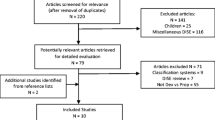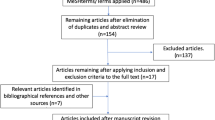Abstract
Purpose
Drug-induced sleep endoscopy (DISE) allows for direct airway observation in patients with obstructive sleep apnea. This study compared the safety profiles and efficacies of three regimens for DISE.
Methods
Sixty-six patients were randomly assigned to receive propofol alone (n = 22), a propofol-remifentanil combination (n = 22), or a dexmedetomidine-remifentanil combination (n = 22). Remifentanil was infused at a concentration of 1.5 ng·ml−1 in the propofol-remifentanil and dexmedetomidine-remifentanil groups, whereas saline was infused in the propofol group. The propofol and propofol-remifentanil groups received propofol at a starting concentration of 1.0 μg·ml−1, then 0.1 μg·ml−1 increments at 5 min intervals. The dexmedetomidine-remifentanil group received 1.0 μg·kg−1 loading dose of dexmedetomidine for 10 min and then 0.2 μg·kg−1·h−1 increments at 5 min intervals.
Results
The incidence of oxygen desaturation was significantly higher in the propofol-remifentanil group compared with that of the dexmedetomidine-remifentanil group (77 vs. 45 %, respectively, P = 0.024). Even with a maximum dose of dexmedetomidine (1.4 μg·kg−1·h−1), 50 % of the dexmedetomidine-remifentanil group did not reach sufficient sedation and required additional propofol. Cough reflex occurred in five patients of propofol group and in neither of the other groups (P = 0.004).
Conclusions
The propofol-remifentanil combination was associated with a higher incidence of desaturation. The dexmedetomidine-remifentanil combination was associated with inadequate sedation in one half of the patients, even though it produced less respiratory depression. Addition of remifentanil reduced the cough reflex.


Similar content being viewed by others
References
Young T, Peppard PE, Gottlieb DJ (2002) Epidemiology of obstructive sleep apnea: a population health perspective. Am J Respir Crit Care Med 165:1217–39
Richard W, Venker J, den Herder C, Kox D, van den Berg B, Laman M, van Tinteren H, de Vries N (2007) Acceptance and long-term compliance of nCPAP in obstructive sleep apnea. Eur Arch Otorhinolaryngol 264:1081–6
Pringle MB, Croft CB (1991) A comparison of sleep nasendoscopy and the Muller manoeuvre. Clin Otolaryngol Allied Sci 16:559–62
Eichler C, Sommer JU, Stuck BA, Hormann K, Maurer JT (2013) Does drug-induced sleep endoscopy change the treatment concept of patients with snoring and obstructive sleep apnea? Sleep Breath 17:63–8
DE Corso E, Fiorita A, Rizzotto G, Mennuni GF, Meucci D, Giuliani M, Marchese MR, Levantesi L, Della Marca G, Paludetti G, Scarano E (2013) The role of drug-induced sleep endoscopy in the diagnosis and management of obstructive sleep apnoea syndrome: our personal experience. Acta Otorhinolaryngol Ital 33:405–13
Pilaete K, De Medts J, Delsupehe KG (2014) Drug-induced sleep endoscopy changes snoring management plan very significantly compared to standard clinical evaluation. Eur Arch Otorhinolaryngol 271:1311–9
Ulualp SO, Szmuk P (2013) Drug-induced sleep endoscopy for upper airway evaluation in children with obstructive sleep apnea. Laryngoscope 123:292–7
Lin AC, Koltai PJ (2012) Sleep endoscopy in the evaluation of pediatric obstructive sleep apnea. Int J Pediatr 2012:576719
De Vito A, Agnoletti V, Berrettini S, Piraccini E, Criscuolo A, Corso R, Campanini A, Gambale G, Vicini C (2011) Drug-induced sleep endoscopy: conventional versus target controlled infusion techniques—a randomized controlled study. Eur Arch Otorhinolaryngol 268:457–62
Rabelo FA, Braga A, Kupper DS, De Oliveira JA, Lopes FM, de Lima Mattos PL, Barreto SG, Sander HH, Fernandes RM, Valera FC (2010) Propofol-induced sleep: polysomnographic evaluation of patients with obstructive sleep apnea and controls. Otolaryngol Head Neck Surg 142:218–24
Roblin G, Williams AR, Whittet H (2001) Target-controlled infusion in sleep endoscopy. Laryngoscope 111:175–6
Carrasco Llatas M, Agostini Porras G, Cuesta González MT, Rodrigo Sanbartolomé A, Giner Bayarri P, Gómez-Pajares F, Dalmau Galofre J (2014) Drug-induced sleep endoscopy: a two drug comparison and simultaneous polysomnography. Eur Arch Otorhinolaryngol 271:181–7
Dere K, Sucullu I, Budak ET, Yeyen S, Filiz AI, Ozkan S, Dagli G (2010) A comparison of dexmedetomidine versus midazolam for sedation, pain and hemodynamic control, during colonoscopy under conscious sedation. Eur J Anaesthesiol 27:648–52
Avitsian R, Lin J, Lotto M, Ebrahim Z (2005) Dexmedetomidine and awake fiberoptic intubation for possible cervical spine myelopathy: a clinical series. J Neurosurg Anesthesiol 17:97–9
Ryu JH, Lee SW, Lee JH, Lee EH, Do SH, Kim CS (2012) Randomized double-blind study of remifentanil and dexmedetomidine for flexible bronchoscopy. Br J Anaesth 108:503–11
Bergese SD, Candiotti KA, Bokesch PM, Zura A, Wisemandle W, Bekker AY, Group AS (2010) A phase IIIb, randomized, double-blind, placebo-controlled, multicenter study evaluating the safety and efficacy of dexmedetomidine for sedation during awake fiberoptic intubation. Am J Ther 17:586–95
Holliday SF, Kane-Gill SL, Empey PE, Buckley MS, Smithburger PL (2014) Interpatient variability in dexmedetomidine response: a survey of the literature. ScientificWorldJournal 2014:805013
Tellor BR, Arnold HM, Micek ST, Kollef MH (2012) Occurrence and predictors of dexmedetomidine infusion intolerance and failure. Hosp Pract 40:186–92
Smithburger PL, Smith RB, Kane-Gill SL, Empey PE (2014) Patient predictors of dexmedetomidine effectiveness for sedation in intensive care units. Am J Crit Care 23:160–5
Murphy M, Bruno MA, Riedner BA, Boveroux P, Noirhomme Q, Landsness EC, Brichant JF, Phillips C, Massimini M, Laureys S, Tononi G, Boly M (2011) Propofol anesthesia and sleep: a high-density EEG study. Sleep 34:283–91A
Hillman DR, Walsh JH, Maddison KJ, Platt PR, Kirkness JP, Noffsinger WJ, Eastwood PR (2009) Evolution of changes in upper airway collapsibility during slow induction of anesthesia with propofol. Anesthesiology 111:63–71
Vennila R, Hall A, Ali M, Bhuiyan N, Pirotta D, Raw DA (2011) Remifentanil as single agent to facilitate awake fibreoptic intubation in the absence of premedication. Anaesthesia 66:368–72
Aouad MT, Al-Alami AA, Nasr VG, Souki FG, Zbeidy RA, Siddik-Sayyid SM (2009) The effect of low-dose remifentanil on responses to the endotracheal tube during emergence from general anesthesia. Anesth Analg 108:1157–60
Dyck JB, Maze M, Haack C, Azarnoff DL, Vuorilehto L, Shafer SL (1993) Computer-controlled infusion of intravenous dexmedetomidine hydrochloride in adult human volunteers. Anesthesiology 78:821–8
Kasuya Y, Govinda R, Rauch S, Mascha EJ, Sessler DI, Turan A (2009) The correlation between bispectral index and observational sedation scale in volunteers sedated with dexmedetomidine and propofol. Anesth Analg 109:1811–5
Conflict of interest
The authors have no funding, financial relationship, or conflicts of interest to disclose.
Author information
Authors and Affiliations
Corresponding author
Appendix
Appendix
Rights and permissions
About this article
Cite this article
Cho, J.S., Soh, S., Kim, E.J. et al. Comparison of three sedation regimens for drug-induced sleep endoscopy. Sleep Breath 19, 711–717 (2015). https://doi.org/10.1007/s11325-015-1127-9
Received:
Revised:
Accepted:
Published:
Issue Date:
DOI: https://doi.org/10.1007/s11325-015-1127-9




